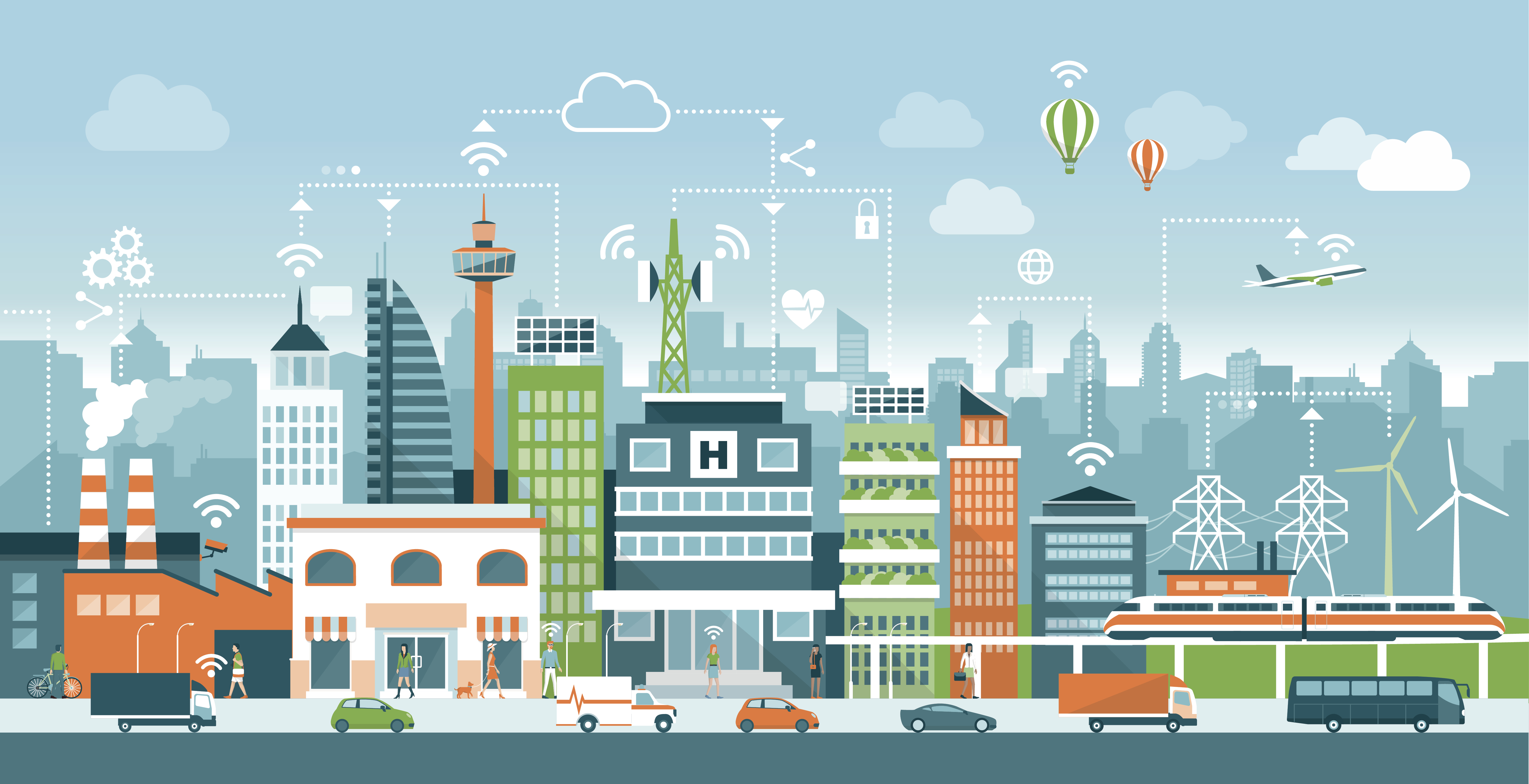Enabling Smart Cities – the need for a full fibre infrastructure
By Elaine Doherty, City Manager for Edinburgh, CityFibre
I’m passionate about the ability of technology to effect positive change for society. As CityFibre’s City Manager for Edinburgh, I’m in the lucky position of being at the forefront of CityFibre’s full fibre rollout to homes and businesses across the UK.
With the UK currently lagging behind many OECD countries when it comes to full-fibre roll out with only 8% of UK premises currently having access, there is clearly a need to improve on our current ageing digital infrastructure. It is important that we build a new generation of future-proofed digital infrastructure, transforming digital capabilities of entire communities and underpinning the economy for the future.
Full fibre with speeds of 1000Mbps is important for us today because Global IP traffic will increase three-fold over the next 5 years and the number of devices connected to Internet (IP networks) will be over three times the global population by 2022.
With our internet consumption on the increase and the need to empower our people through access to more and more information becoming ever more apparent, it is important that we look to adopt full fibre capabilities that will help enable this and the growth of the smart city applications.
What is a ‘Smart City’?

There are many of these seemingly new-fangled ‘Smart’ terms, with no clear definition of what a smart city is. Everyone has a differing view of the definition, highly dependent on their own personal experiences, the challenges they face within the cities they work or live in and the positive outcomes required by each individual city.
Every city in the world has a set of common needs, as well as individual ones driven by local economies, cultures, diversity and current infrastructure. The good news is that there are many people developing smart city applications which we can learn from and apply in our own cities, allowing us to create innovative solutions that suit our city and people’s needs – the possibilities are endless!
Put simply, a smart city uses devices, combined with intelligent software and analytics which help solve city challenges and deliver information to people, to enable those people to make better decisions and improve the quality of their life.
There have been a lot of great advances in both thinking and technological solutions in recent years that enable smart city applications. But the advances are not all about technology and creating efficiencies, it is about the people and how these advances empower people to be more productive, save time, stay connected and have more information to make better decisions.
You may have heard about smart applications, smart infrastructure, automated vehicles, Mobility As A Service (MAAS), Telehealth, Internet of Things (IoT), smart energy, smart campuses…..but what do all these mean for the average person?
The list is endless, but some examples of what smart city technology can bring are as follows:-
- Improved health, providing quicker, faster more readily available access to health service provision
- Enhance community connectedness
- Improved safety on our streets
- Greater sustainability and carbon reduction
- Time saving applications
- Empowering people to improve their quality of life and work/life balance
- Helping reduce the cost of living
- Provide a boost to the local economy
In the early days, smart city technology was all about improving efficiencies and automated processes, improving responsiveness and reducing complexity and costs. These days however, they are far more powerful when the capabilities are extended to the wider community, effectively making the data more readily available to people on hand-held smart devices that enable them to ultimately make better decisions.
An Edinburgh example, which many may not even realise is a smart city application, is the Transport for Edinburgh (TFE) App; centrally held, collated timetable and real time bus and tram location data. This has helped enable a better understanding of the entire TFE fleet and drive efficiencies and costs out of the operation, all great stuff! When this real time data was made available in a Mobile app to the Edinburgh community – the immediate effect was empowerment – people had real time bus and tram schedule information readily available in the palm of their hand enabling them to make better decisions.
Over the coming months as part of my blog series I will be looking at a variety of smart city categories and applications. Where I will hopefully be able to explain a little more about what these are and how people, businesses and the City will benefit.
They include:-
- IoT
- Smart Transport/Intelligent transport
- Smart health/Telehealth/ Technology Enabled Care
- Smart Infrastructure
- Smart Homes
- Smart Campus
- Smart Energy
- Industry 4.0 with Automation and AI






